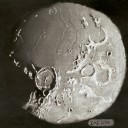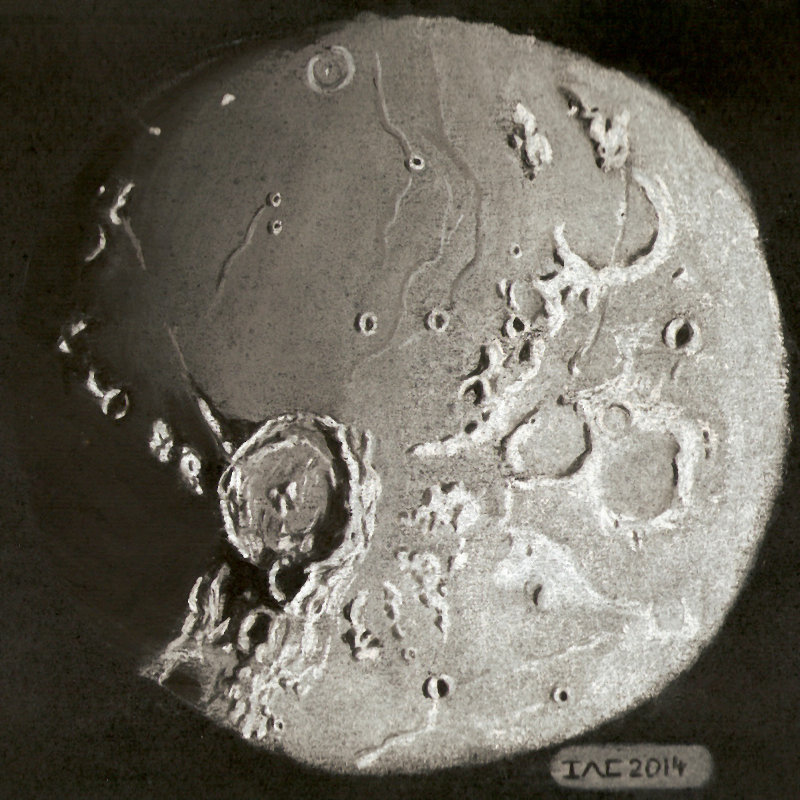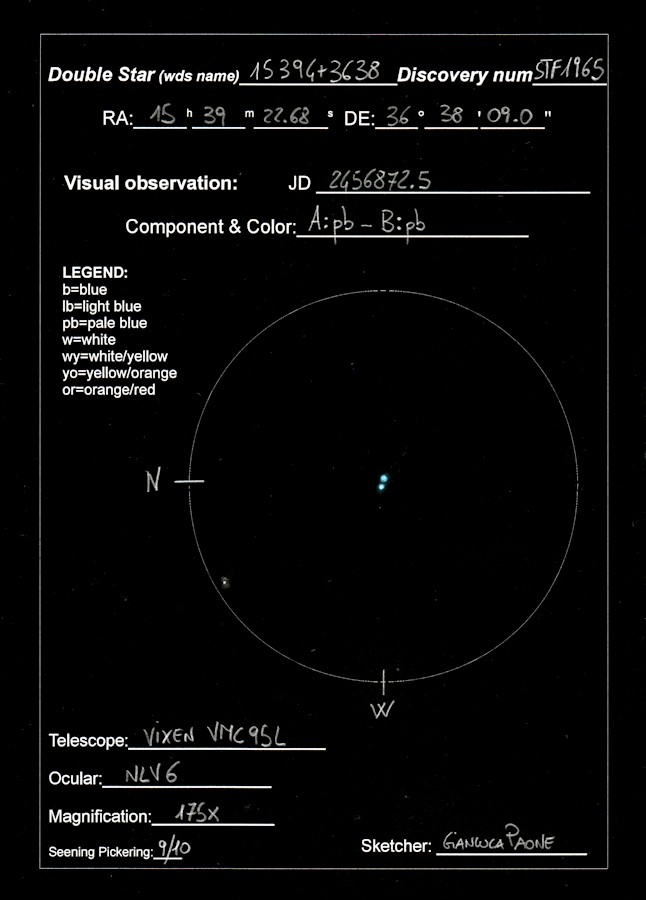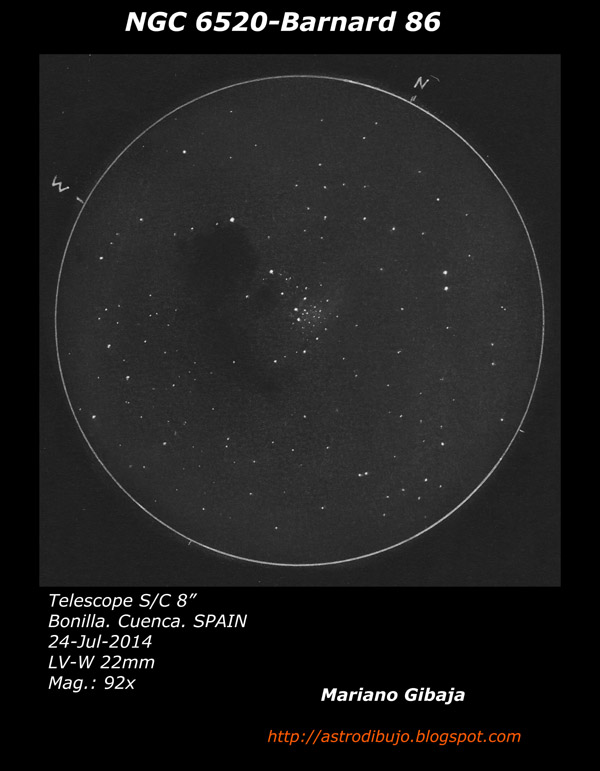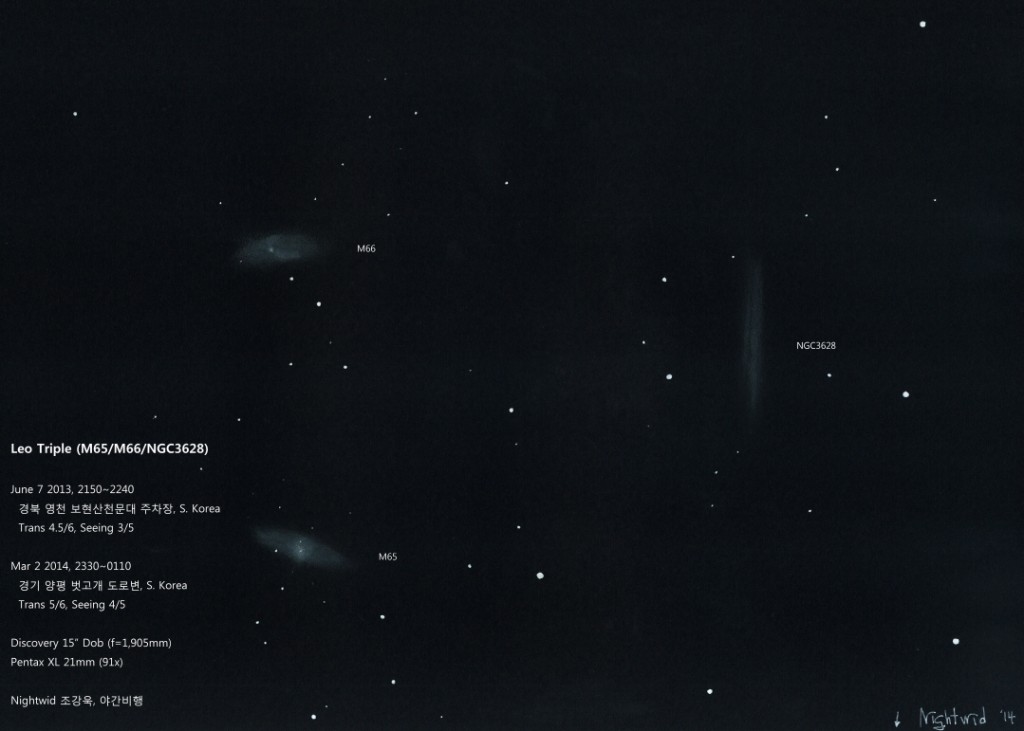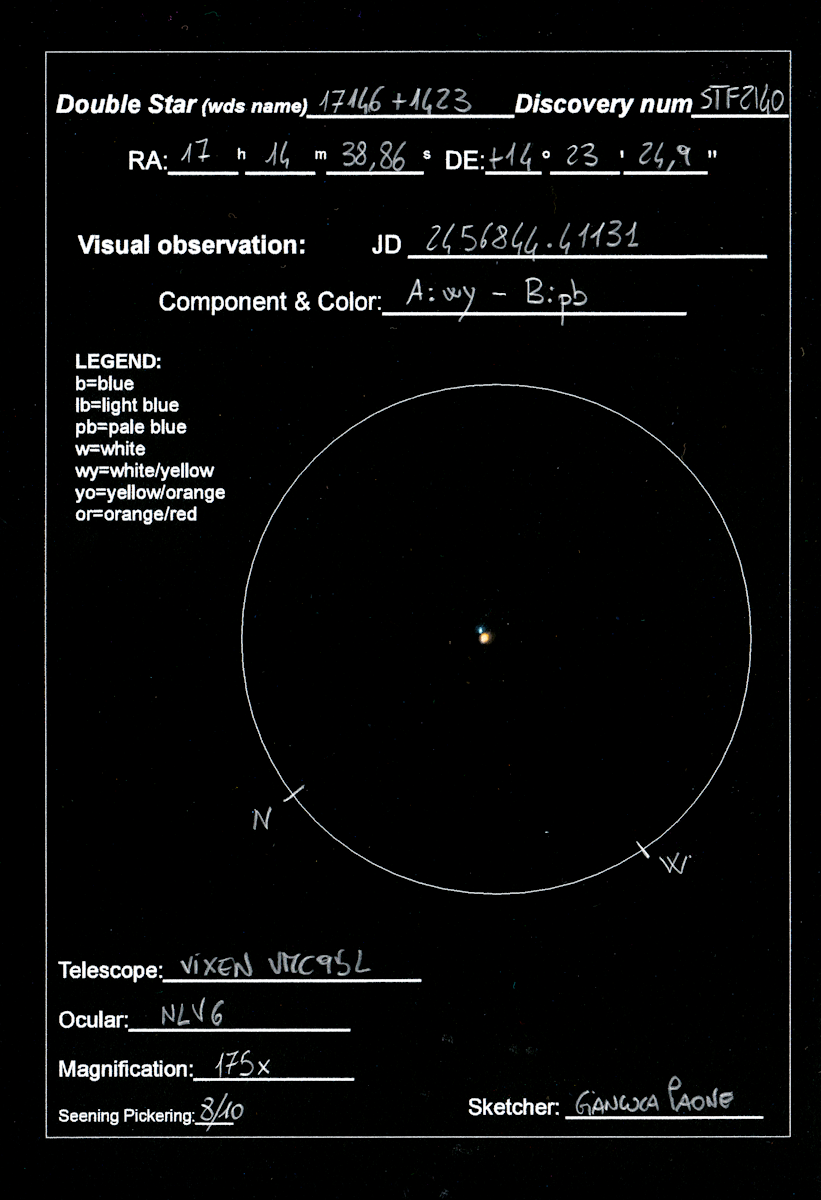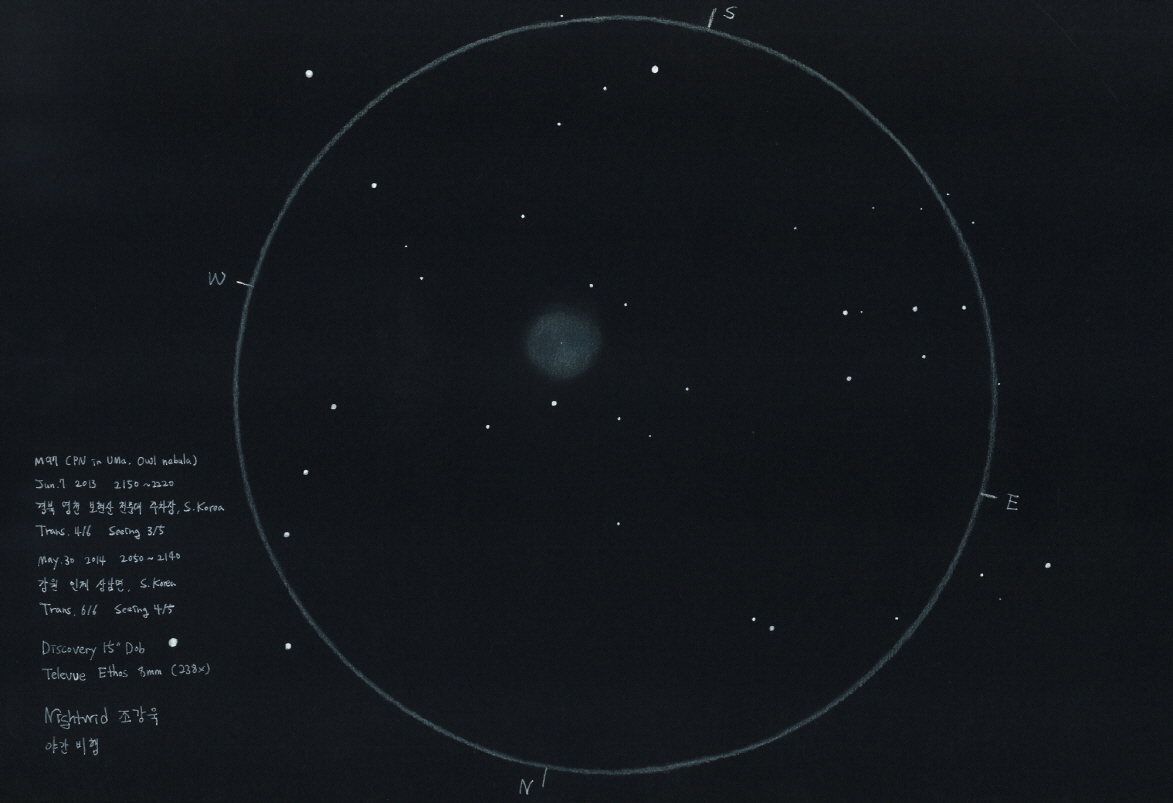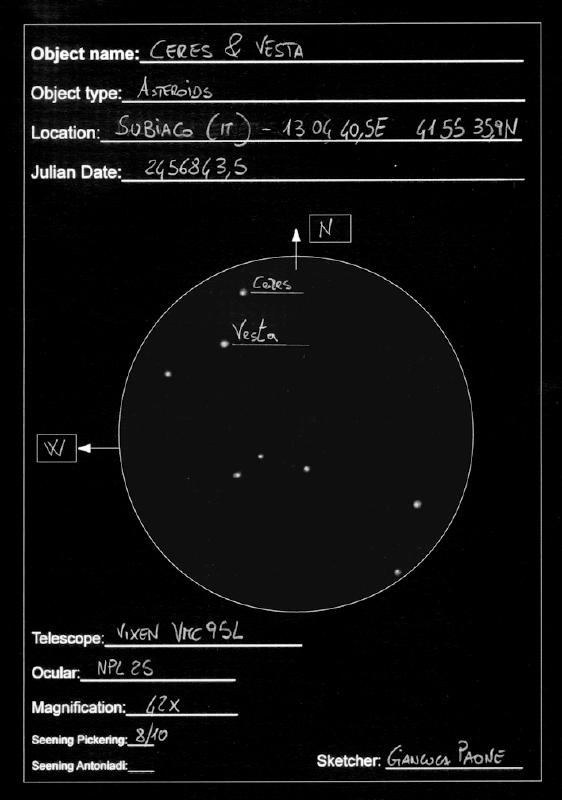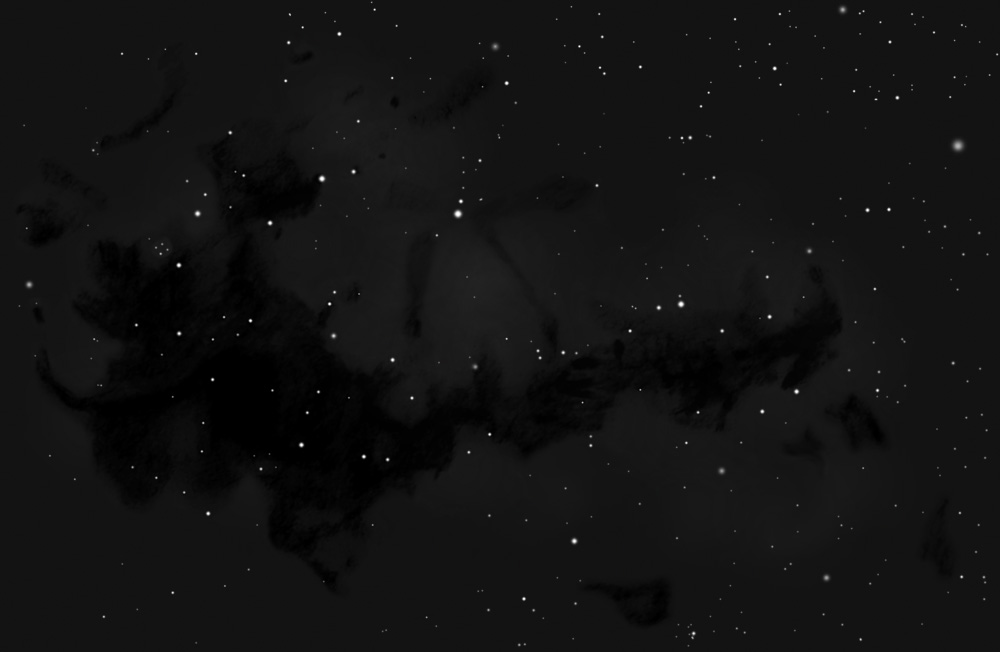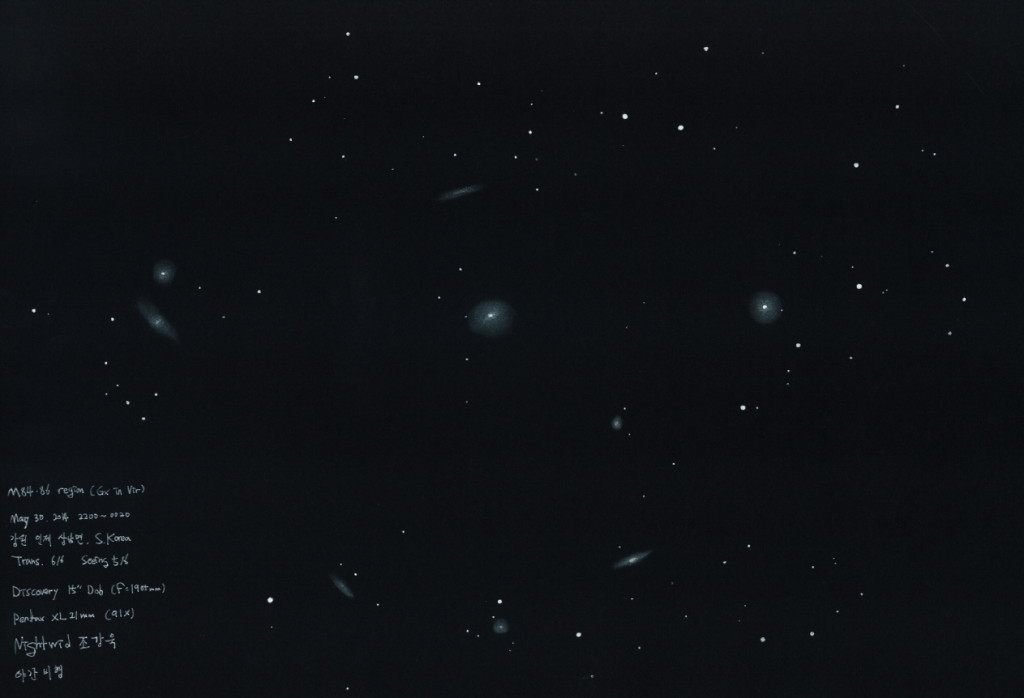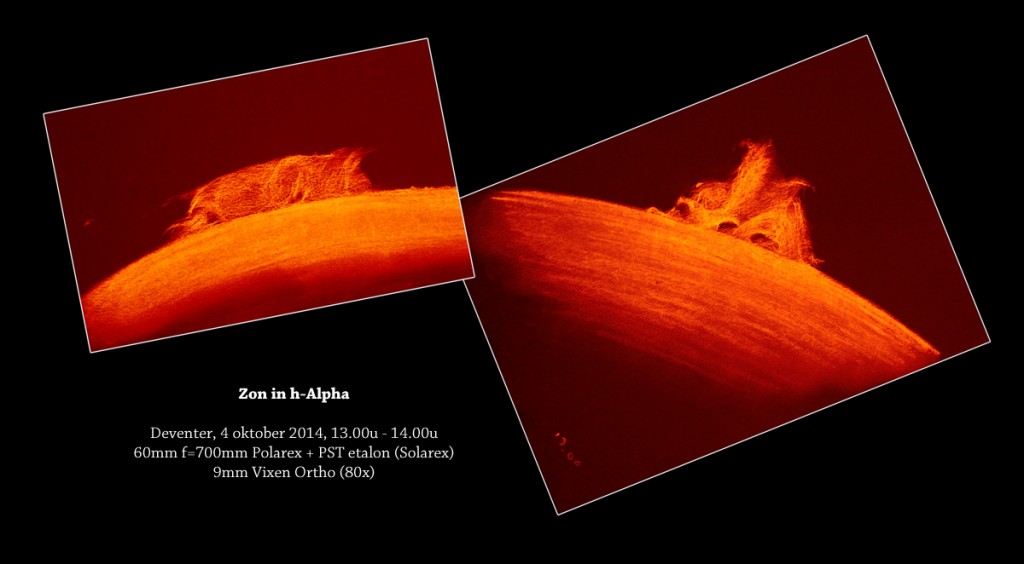
Object Name: Sun
Object Type: Solar prominence
Location: Deventer, The Netherlands
Date: October 4, 2014
Media: pastel pencils on black paper
As the days shorten rapidly and the sun gets more south every day, the warm afternoons are coming to an end in the Netherlands. On what could be the last sunny and warm day of the year, the active Sun was the obvious target for an astronomical sketch. I set up my modded 60mm Unitron/Polarex refractor and sketched two large prominences on the western edge of the solar disk. The prominences were of the “stable” and relatively long lasting type, but still a lot of internal swirling and changes in brightness could be seen in both at high magnifications. Due to seeing conditions magnifications were limited to about 80x-100x. I made two separate sketches, but got the idea of combining them in a composition when photographing them afterwards.
Kind regards,
Roel Weijenberg

